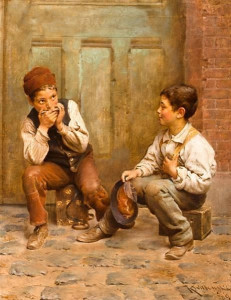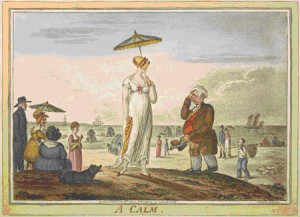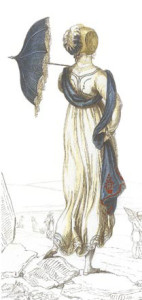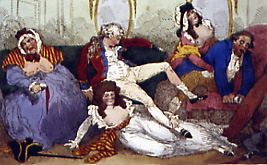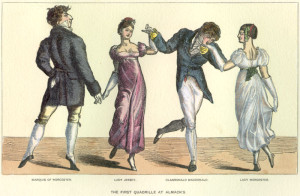Greetings from San Francisco!
Yes, we’re talking about eels today. One of the stranger foodstuffs of history and one of the most odd life cycles of any critter, eels are an English delicacy, possibly not so popular now as in former times. I can’t imagine why not.
Say Wide Sargasso Sea to me and it makes me think of eels, not Jane Eyre or the first Mrs. Rochester. That’s where both European and American eels spawn in the beginning of an extremely odd life cycle of metamorposes. Eggs hatch into leaf-shaped larvae, drift to the coast, and become elvers or glass eels, and take to a fresh water habitat, swimming upstream and even traveling overland before settling into a river, growing and becoming yellow eels. They can live there for several decades before returning to the Sargasso Sea as silver eels where they embrace a salt water environment again, reproduce and die.
 Like so many European species, eel populations are in decline. So the harvesting of elvers, in a season that lasts only a few days (the larvae will only enter waters at the right temperature), is now rigorously controlled. Once a local delicacy, most of them are exported to the Asian market. The Severn, England’s longest river, is one of the major elver rivers. (No, this is NOT dirty spaghetti).
Like so many European species, eel populations are in decline. So the harvesting of elvers, in a season that lasts only a few days (the larvae will only enter waters at the right temperature), is now rigorously controlled. Once a local delicacy, most of them are exported to the Asian market. The Severn, England’s longest river, is one of the major elver rivers. (No, this is NOT dirty spaghetti).
As for mature eels, they’re mostly eaten now in a jellied form (the eel is naturally gelatinous, or slimy. Yum).
There are still establishments in London where you can sample the classic Victorian triad of eel, pie, and mash. 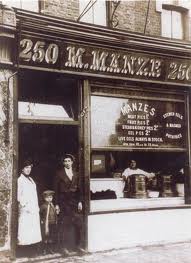 For an unbiased account of what jellied eels taste like at this pie shop, still around today, you can visit the Desperately Seeking Root Beer blog, written by an expatriate Californian.
For an unbiased account of what jellied eels taste like at this pie shop, still around today, you can visit the Desperately Seeking Root Beer blog, written by an expatriate Californian.
Here’s even more eely deliciousness, an authentic sixteenth century recipe for Fish and Fruit Pie and an account of cooking it here:
With that, Fish Pies: to instruct the person who will be doing this job–because not everyone is a master of it–he should get his fish, that is, good bellies of tuna, good big filets of carp, good big fresh eels–and of all that he should get the quantity that is needed for the number of pies that he is ordered to make; take all of it and cut it into good-sized pieces and set it to cook in a good clean cauldron appropriate in size for the amount you have; when it is cooked, take it out onto fine tables which are good and clean, and cull through all your fish to remove any scales or bones, then chop it up well. Get good candied figs, prunes and dates and slice these up small, to the size of small dice; get pinenuts and have them cleaned thoroughly and get candied raisins and clean them well so there are no seeds left; of all of this take an amount proper for the amount of the fish filling you are making, wash it well in white wine, then mix it in with your fish in a fine pan. Then get another pan which is good and clean in which you will clarify good fine oil; when it is clarified put enough of that oil into your filling for that amount of it, then set it on hot coals to heat up, and stir it continuously with a good spoon. Then get good spice powder and put in a reasonable amount of it, and a lot of sugar. Then order your pastry cook to make large or small pie shells for you, and they should be covered.
What’s the weirdest food you’ve ever eaten? And if you’ve eaten eels, we want to hear all about it.

